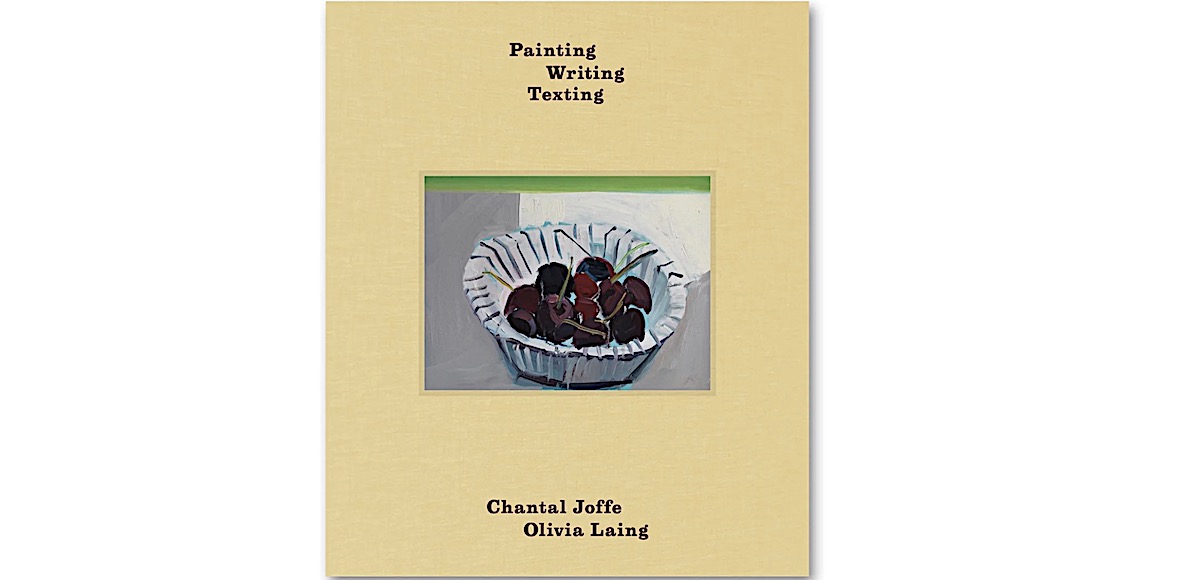Painting, Writing, Texting is not your usual art book. It’s part studio diary, part correspondence, part act of friendship. Chantal Joffe and Olivia Laing have created something that sits between genres — a painter’s visual tempo meeting a writer’s analytical hum. The book began, fittingly, with a portrait sitting. Joffe asked Laing to pose; Laing said yes; the conversation did the rest. What unfolded was a seven-year exchange that blurs the line between looking and being looked at.
Joffe’s portraits — big, quick, and steeped in feeling — don’t flatter. They see. Faces tilt, eyes droop, bodies slump into the truth of being alive. Laing’s essays respond in kind, writing with an intimacy that sidesteps theory in favour of curiosity. Both artists circle the same questions: how do you make art out of real life without killing it in the process? What does friendship give — or demand — of an artist’s gaze?
The result is electric in its honesty. It feels unpolished in the best way, alive with the friction of two sensibilities testing each other. Laing dissects the emotional labour of sitting; Joffe paints the act of looking until it starts to ache. Painting Writing Texting isn’t a tidy collaboration — it’s a conversation that keeps spilling over the edges of the page, beautifully unresolved.
Chantal Joffe
Chantal Joffe paints like someone who refuses to tidy up after emotion. Born in St. Albans in 1969, raised partly in the US, she’s one of Britain’s most incisive figurative painters — though she’d probably scoff at that kind of label. Her work is instantly recognisable: loose, big-hearted, sometimes disarmingly raw portraits that hover between tenderness and disquiet. The brushwork is fast, instinctive, and just a little bit reckless — like she’s trying to catch a fleeting truth before it disappears.
She studied at the Glasgow School of Art and later the Royal College of Art, emerging in the late ’90s as a kind of anti-minimalist, when figurative painting wasn’t fashionable. Instead of sleek gestures or conceptual distance, Joffe turned her gaze inward — to her friends, her daughter Esme, and the messy continuum of female life. She paints with affection but never sentimentality. The eyes in her portraits don’t just look back; they appraise, accuse, and endure.
Over the years, she’s had major shows at Victoria Miro, the Jewish Museum in New York, and the National Portrait Gallery. Critics have called her “a modern Alice Neel,” but that undersells her bite. Joffe’s women — sometimes naked, sometimes exhausted, sometimes defiantly present — occupy space with an almost confrontational honesty.
Her self-portraits, particularly those painted through middle age, pull no punches. They sag, glare, slump. They live. Joffe says she paints “people I love,” but it’s also clear she’s painting time — the kind that leaves marks, not metaphors. In an art world that still prizes polish and cleverness, she offers something braver: humanity in all its uneven texture. Standing before her canvases, you get the feeling she’s not documenting life so much as surviving it, brush in hand.
Olivia Laing
Olivia Laing is one of those rare writers who moves between art criticism, memoir, and fiction with the same quiet intensity. Their sentences have a pulse — calm, observant, yet deeply humane. Best known for The Lonely City and Everybody, Laing writes about solitude, the body, and the fragile ways people connect, weaving art and autobiography until the boundaries dissolve. Their latest success, The Garden Against Time, became a Sunday Times number one bestseller, confirming what most readers already knew — Laing has become essential reading for a generation that mistrusts certainty but still hungers for meaning.
A Fellow of the Royal Society of Literature and an Honorary Fellow of the Royal Academy of Arts, Laing’s work reaches beyond the page. They’ve written about Derek Jarman, Agnes Martin, and Andy Warhol with the kind of empathy that makes criticism feel like care. Funny Weather captured that tone perfectly — art as a kind of emergency response, a way to survive when the world feels unbearable.
Their fiction, from Crudo to The Silver Book, explores the themes of disguise, identity, and the seductive illusions of performance. Always, Laing’s real subject is the human condition — messy, beautiful, and defiantly unfinished.

